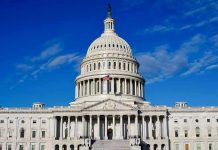
One reckless moment on a Tampa street shattered a sanctuary, leaving a city questioning whether the pursuit of justice can justify carnage at its heart.
Story Snapshot
- Four lives lost and over a dozen injured when a fleeing car crashed into Bradley’s on 7th, a cornerstone of Tampa’s LGBTQ+ community.
- The crash followed a police pursuit that was disengaged moments before disaster struck, spotlighting pursuit protocols.
- The tragedy has ignited urgent debates over street racing, urban safety, and the delicate balance between law enforcement tactics and public risk.
- Community trauma and policy reckoning loom as investigations unfold and vigils fill Ybor City’s historic streets.
Catastrophe at the Heart of Ybor City
Just after midnight on November 8, 2025, the vibrant hum of Tampa’s Ybor City nightlife was ripped apart. Silas Kenneth Sampson, just 22 years old, barreled through the city after police spotted him street racing on Interstate 275. He lost control of his car and slammed into the crowded outdoor patio of Bradley’s on 7th, a bar cherished as a safe haven in the LGBTQ+ community. In a matter of seconds, three patrons were killed instantly; another died later at the hospital. The carnage left 13 more injured, dozens traumatized, and a city searching for answers.
Florida Highway Patrol had attempted a PIT maneuver to stop Sampson, but disengaged the pursuit shortly before the crash—raising complex questions about when, how, and if police chases should be halted to prevent greater harm. As the night gave way to dawn, the scene at Bradley’s was one of devastation: upended tables, shattered glass, and the echo of sirens mixing with disbelief and grief.
Street Racing, Pursuit Dilemmas, and Urban Vulnerability
Street racing has long plagued Tampa’s arteries, but this incident thrusts the issue into painful focus. Tampa’s resurgence as a nightlife destination, especially in historic Ybor City, has brought with it crowds—and, too often, a relentless parade of high-speed thrill seekers who treat city streets as racetracks. For law enforcement, each chase is a gamble. Pursuits may stop a dangerous driver but can turn lethal for bystanders in already congested urban spaces. The decision to disengage a pursuit is fraught, balancing public risk with the imperative to apprehend suspects.
Bradley’s on 7th, the site of the tragedy, is more than just a bar. It is a symbol of inclusion, a nightly refuge for Tampa’s LGBTQ+ community, and a linchpin in the economic and cultural life of Ybor City. Its closure reverberates beyond lost revenue; it represents a temporary loss of sanctuary and identity for many in the city. The magnitude of this crash—high casualties at a single venue, the targeting of a social space—makes it a defining moment in Tampa’s ongoing negotiation between celebration and safety.
Community Fallout, Policy Reckoning, and Unanswered Questions
As the community reels, debates flare over enforcement, accountability, and the adequacy of current pursuit policies. Florida has seen several high-profile crashes linked to police chases in recent years, each sparking calls for stricter guidelines and more creative solutions to illegal street racing. For some, the disengagement by police in this case exemplifies restraint that sadly came too late; for others, it underscores the impossibility of guaranteeing safety in any chase scenario within densely populated neighborhoods. The incident has become a rallying point for LGBTQ+ advocates and city leaders alike, both demanding not only justice for the victims but also reforms that might prevent the next tragedy.
Tampa’s mayor and law enforcement officials have issued condolences and promised thorough reviews, but for many, words do little to quiet the grief or the anger. Vigils have filled Ybor’s streets, candles flickering against the backdrop of boarded-up windows and police tape. As the investigation unfolds, every detail—the timeline of the pursuit, the decisions made by officers, the history of racing in the corridor—becomes fuel for a broader reckoning about how cities can protect both freedom and safety.
Ongoing Trauma and the Road Ahead for Tampa
For the families of the dead and injured, the aftermath remains raw. Hospital rooms are full, and the scars on survivors—physical and psychological—will linger long after headlines fade. Local businesses in Ybor City, already battered by the crash and its fallout, face uncertain recoveries. The LGBTQ+ community, still processing the violation of a cherished space, rallies in solidarity but demands more than sympathy; they seek tangible changes that honor those lost.
Experts warn that without substantial shifts in street design, enforcement, and pursuit policy, urban centers like Tampa will remain vulnerable to such tragedies. Criminologists and urban planners alike call for a recalibrated approach—one that uses technology and smarter deterrence rather than high-speed gambits through city streets. The coming months will test Tampa’s willingness to learn from pain and remake its approach to urban safety, community trust, and the promise that nightlife need not come with a mortal cost.






